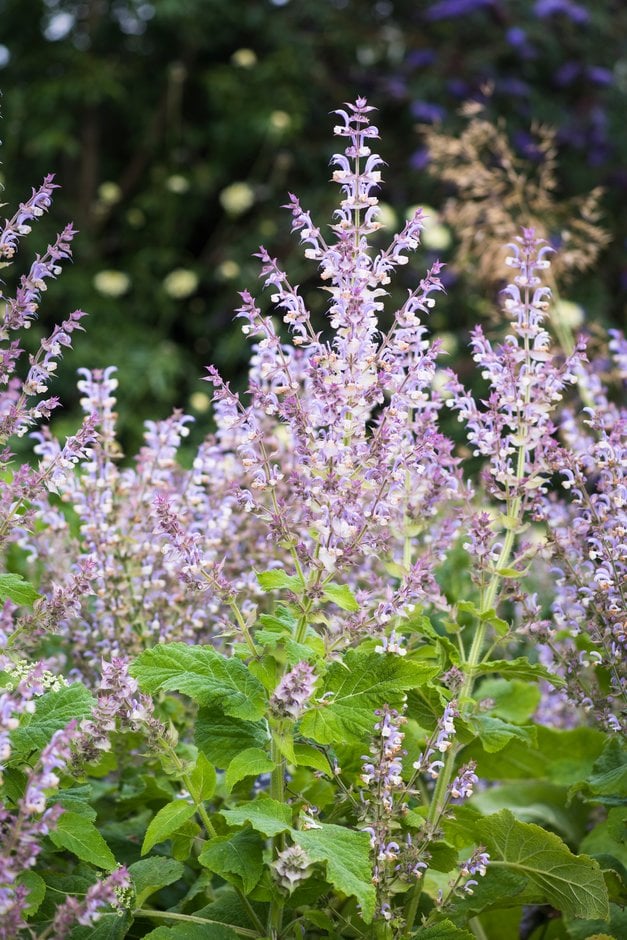Salvia sclarea var. turkestaniana 'Vatican Pink'
Turkestan clary 'Vatican Pink'
A biennial or short-lived perennial to 1m tall, with strongly-aromatic, wrinkled, oblong leaves to 20cm long, and tall, branched spires of pink and white flowers with conspicuous lilac bracts, opening in late spring and summer
Size
Ultimate height
0.5–1 metresTime to ultimate height
1–2 yearsUltimate spread
0.1–0.5 metresGrowing conditions
Moisture
Well–drainedpH
Acid, Alkaline, NeutralColour & scent
| Stem | Flower | Foliage | Fruit | |
| Spring | Purple Pink White | Green | ||
|---|---|---|---|---|
| Summer | Purple Pink White | Green | ||
| Autumn | Green | |||
| Winter |
Position
- Full sun
Aspect
West–facing or South–facing
Exposure
Exposed or Sheltered Hardiness
H5Botanical details
- Family
- Lamiaceae
- Native to GB / Ireland
- No
- Foliage
- Deciduous
- Habit
- Bushy
- Genus
Salvia can be annuals, biennials, herbaceous or evergreen perennials, or shrubs. They have paired, simple or pinnately lobed, often aromatic leaves and 2-lipped flowers in whorls, forming simple or branched spikes or racemes
- Name status
Accepted
- Plant range
- Europe, C. Asia
How to grow
Cultivation
Grow in light, moderately fertile, humus-rich, moist but well-drained soil. Best in full sun but can tolerate light partial shade
Propagation
Propagate by seed, in pots in a cold frame in spring. Alternatively sow in situ in spring
Suggested planting locations and garden types
- Coastal
- Cottage and informal garden
- Gravel garden
- Mediterranean climate plants
- Wildlife gardens
- Flower borders and beds
Pruning
Often dies after flowering. Self-seeds freely if flower heads are not removed
Pests
May be susceptible to sage leafhopper, slugs, snails and rosemary beetle
Diseases
May be susceptible to honey fungus (rarely), powdery mildews, verticillium wilt and foot and root rots
Love gardening
Sign up to receive regular gardening tips, inspiration, offers and more
View our Privacy Policy
Get involved
The Royal Horticultural Society is the UK’s leading gardening charity. We aim to enrich everyone’s life through plants, and make the UK a greener and more beautiful place.
